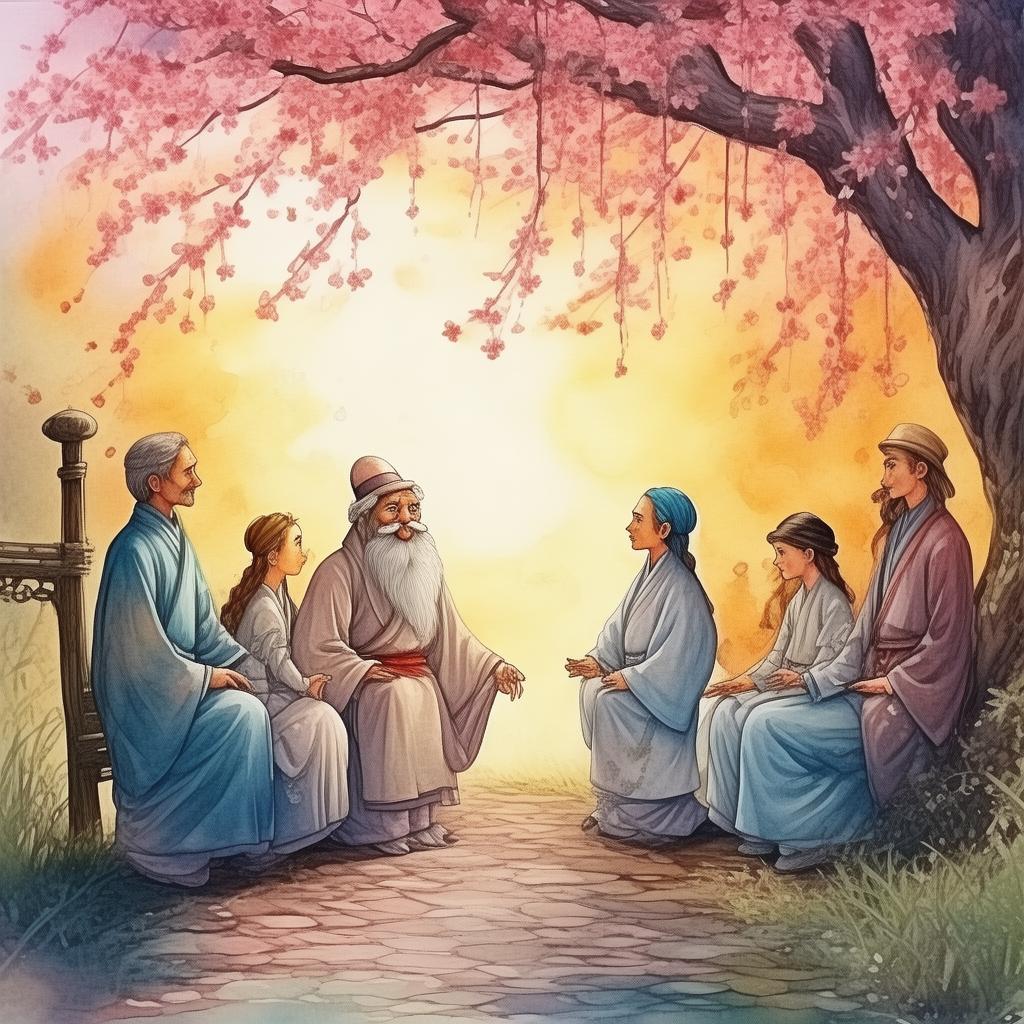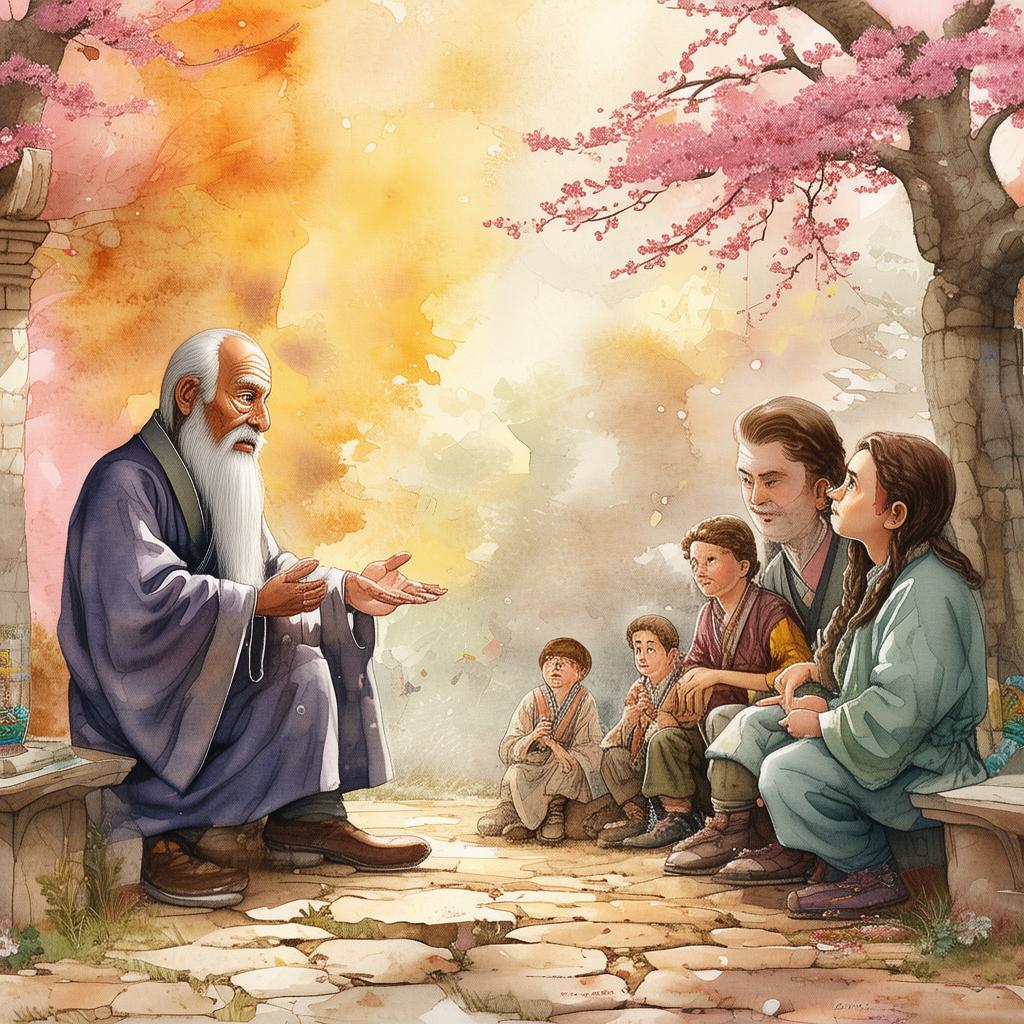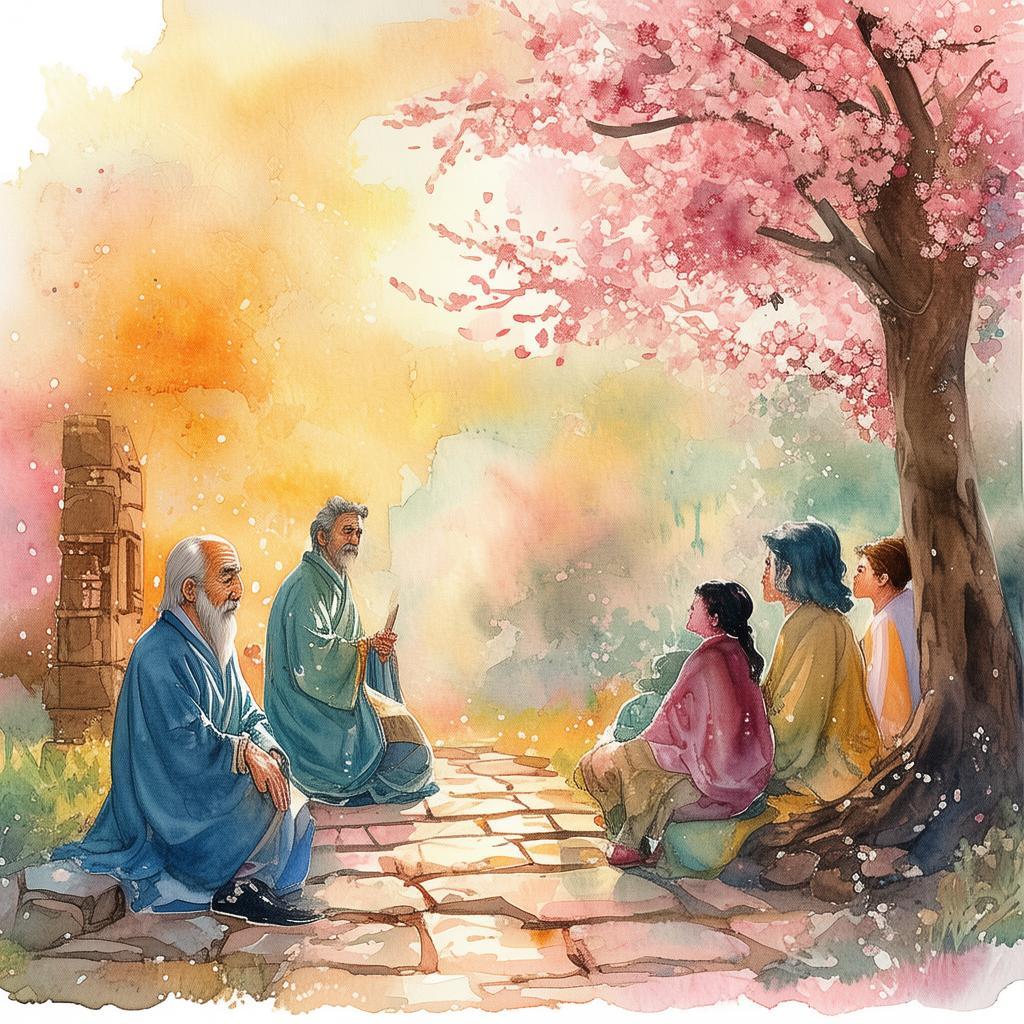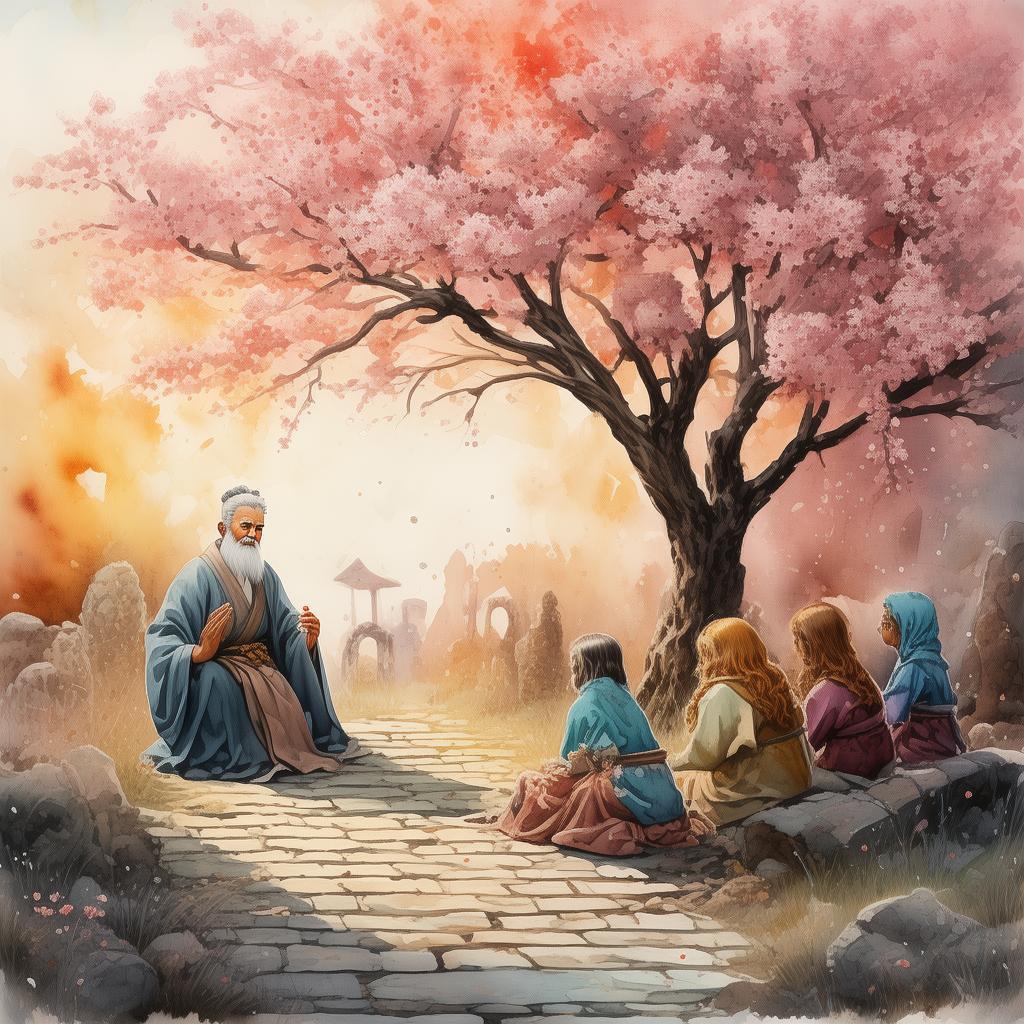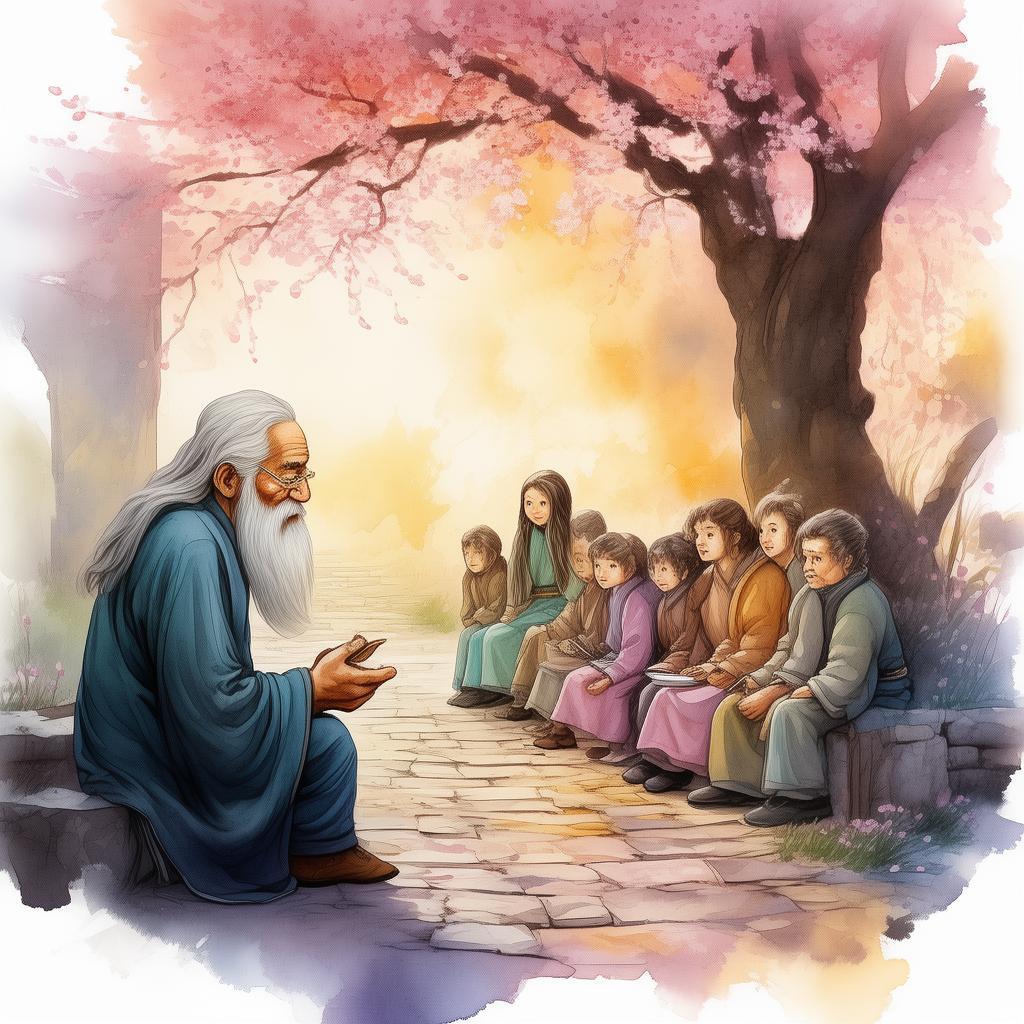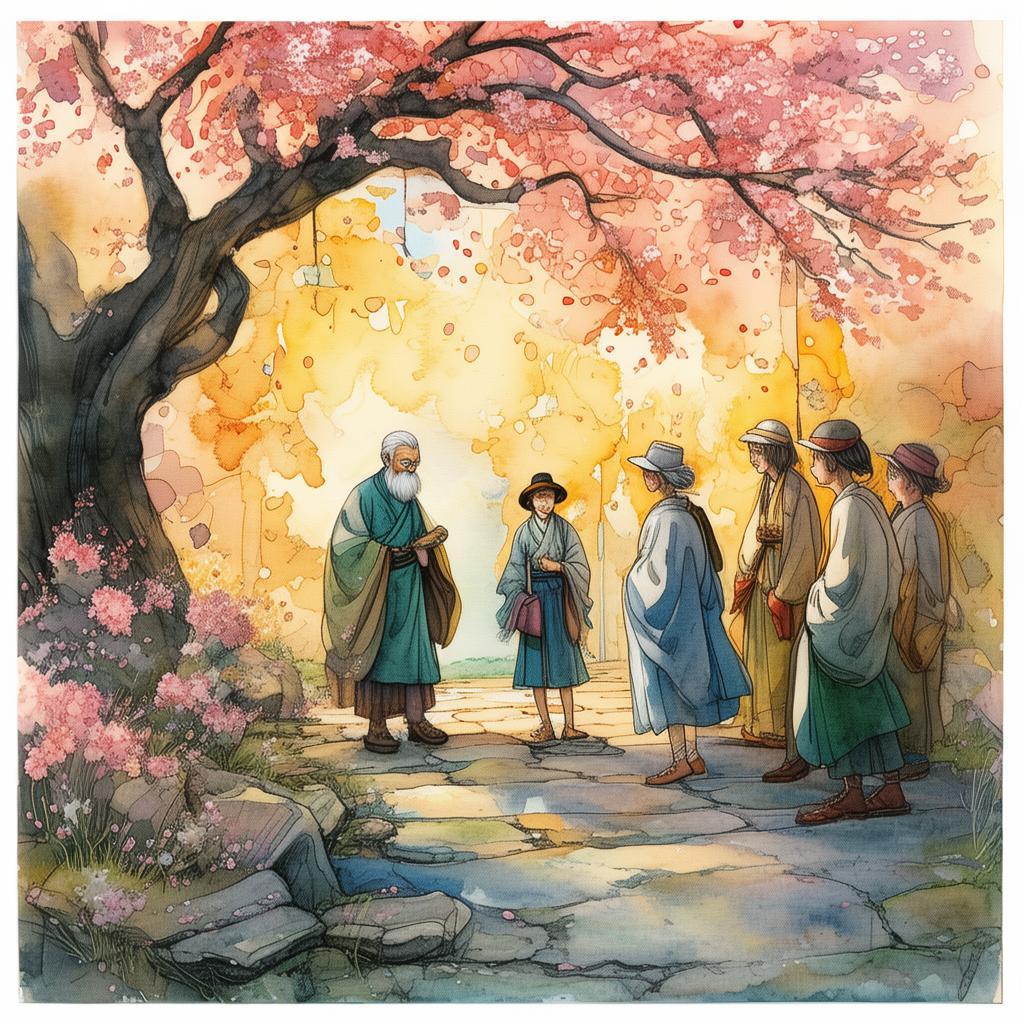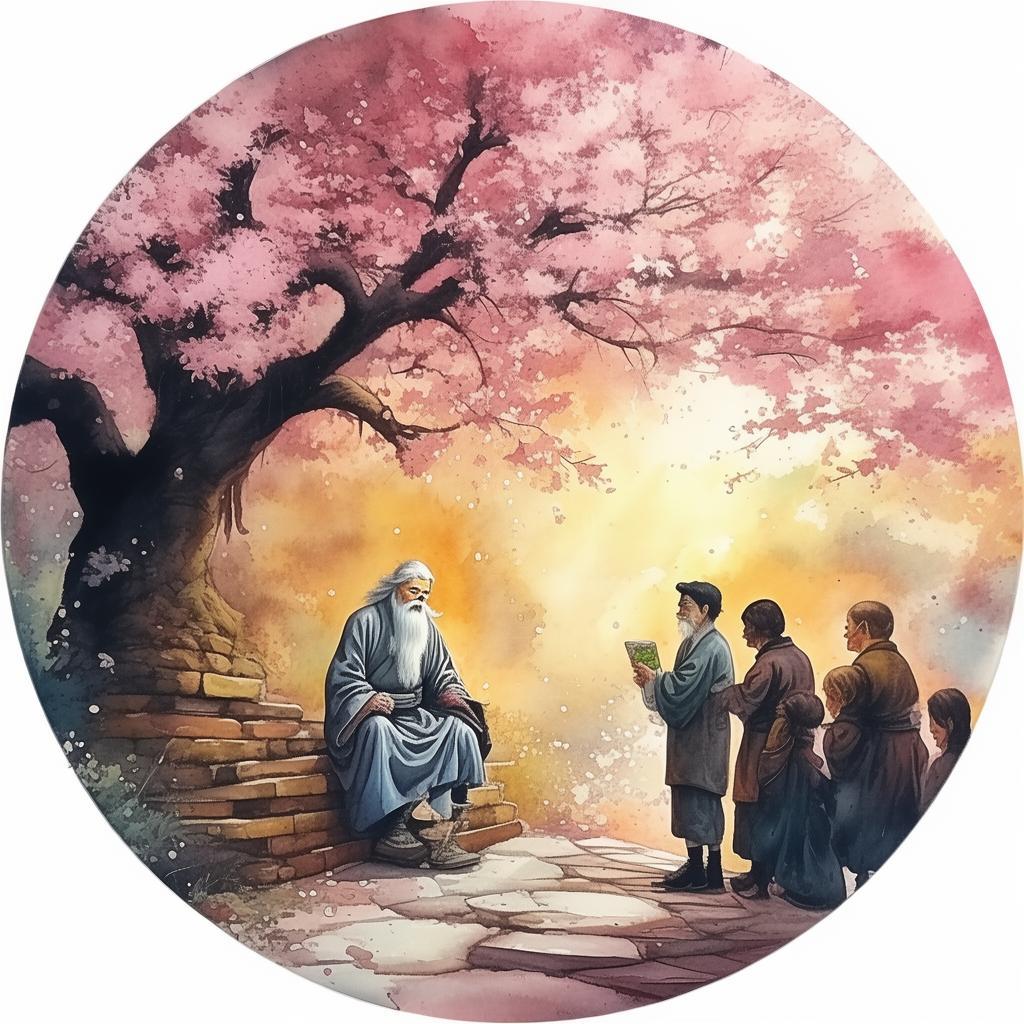The Melody of Eternity: A Symphony of Hope
In the bustling city of Shanghai, amidst the towering skyscrapers and the ceaseless hum of the metropolis, there lived a young composer named Ling. Her name was synonymous with the New Year's Symphony, a piece that had become an annual tradition, a melody that resonated with the essence of renewal and hope. This year, however, was different. The symphony was to be a masterpiece, a testament to the eternal cycle of life, a symphony that would bridge the gap between the past, the present, and the future.
Ling had always been fascinated by the stories of her ancestors, tales of resilience and perseverance that had been passed down through generations. She had grown up hearing these stories, and they had become the bedrock of her identity. It was these stories that had inspired her to compose the New Year's Symphony, a piece that would encapsulate the essence of her heritage.
The symphony was to be a grandiose work, a fusion of traditional Chinese instruments and modern orchestration. It was to be a journey through time, a narrative that would take the audience on a voyage from the ancient dynasties to the modern era, weaving in the hopes and dreams of each generation.
One evening, as Ling sat at her piano, lost in thought, she heard a faint whisper. It was the voice of her great-grandmother, a voice that had long since been silent. "Ling, my dear, the symphony must not only be a reflection of the past but also a beacon of hope for the future," the voice said. "It must tell the story of the eternal cycle of life, the resilience of the human spirit."
Intrigued by the voice, Ling began to compose. She started with the opening bars, a slow, melancholic melody that echoed the somber tones of ancient China. The strings began to hum, the woodwinds to sigh, and the percussion to tap a rhythm that was both haunting and familiar.
As the symphony progressed, Ling found herself transported back to her ancestral home, a small village nestled in the lush mountains of rural China. She saw her ancestors, toiling in the fields, their faces etched with determination and hope. The melody shifted, becoming a lively, upbeat tune that celebrated the spirit of the people, their unyielding will to survive and thrive.
The symphony then moved to the present, with Ling's own story interwoven into the fabric of the music. She played a solo, her fingers dancing across the keys with a passion and intensity that mirrored her own life's journey. The audience could feel her emotions, her hopes, her dreams, and the challenges she had faced.
But the symphony was not just about the past and the present; it was also about the future. As the final movement began, the music took on a majestic quality, a grandiose crescendo that spoke of the endless possibilities that lay ahead. The audience was transported to a world of hope, a world where dreams could be realized and the future could be bright.
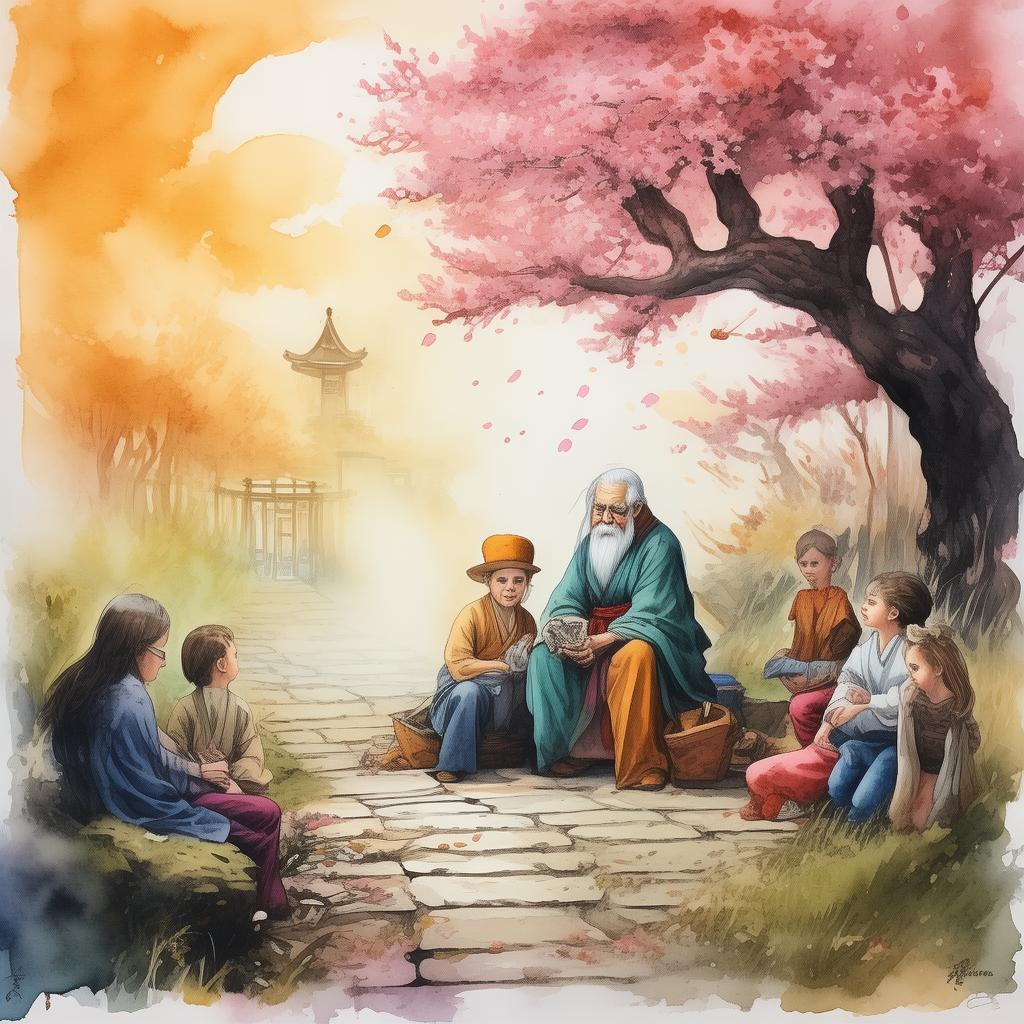
On the night of the symphony's debut, the hall was filled to capacity. As Ling stepped onto the stage, her heart raced with anticipation. She raised her baton, and the music began to flow. The audience was captivated, their eyes fixed on her, their ears tuned to the symphony's magical journey.
As the final note echoed through the hall, the audience erupted into applause. Ling's eyes welled with tears, her heart swelling with pride. She had done it; she had created a symphony that captured the essence of life's eternal cycle, a piece that would be remembered for generations to come.
The New Year's Symphony, A Melody of Eternity and Hope, had become more than just a piece of music; it was a testament to the human spirit, a reminder that no matter how difficult the journey, hope and resilience would always shine through.
In the weeks that followed, the symphony became a sensation. People from all walks of life spoke of it, sharing their own stories and experiences. It was a reminder that the past was a guide, the present was a challenge, and the future was a promise of endless possibilities.
Ling's symphony had done what she had set out to do; it had become a beacon of hope, a melody that would resonate with the soul of every listener. And as the years passed, the symphony continued to be performed, each performance a new chapter in the story of a young composer who had captured the essence of life's eternal cycle in a single, beautiful piece of music.
✨ Original Statement ✨
All articles published on this website (including but not limited to text, images, videos, and other content) are original or authorized for reposting and are protected by relevant laws. Without the explicit written permission of this website, no individual or organization may copy, modify, repost, or use the content for commercial purposes.
If you need to quote or cooperate, please contact this site for authorization. We reserve the right to pursue legal responsibility for any unauthorized use.
Hereby declared.
